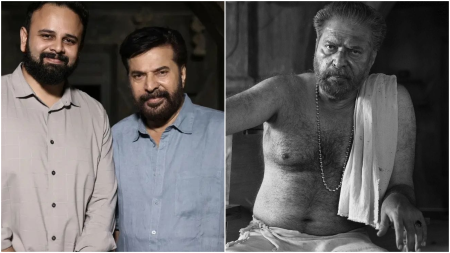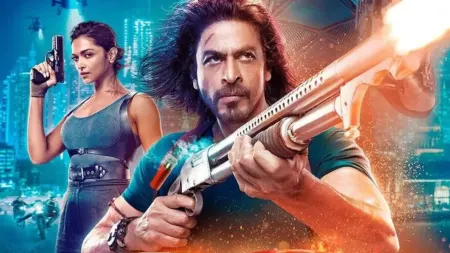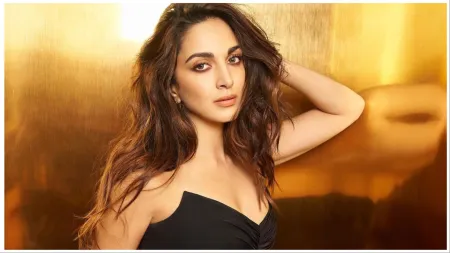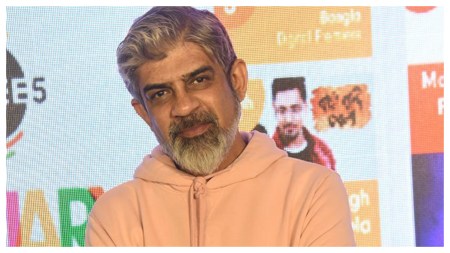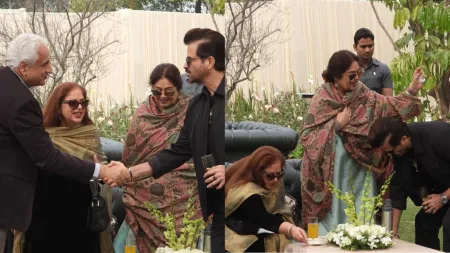“Filmein hamare zamane mein hua karti thi.” Not that my zamana has ended but sometimes I catch my 30-year-old self uttering this very parental cliche whenever I revisit films from the 2000s. What do I miss? Perhaps the pulsating core of a narrative and the audacity of filmmakers who dared to tell them. After witnessing a parade of chest-thumping nationalist narratives in 2023, it was refreshing to revisit Delhi 6, a film that swam against the tide, survived and now has acquired a pristine place in Hindi cinema’s history.
I remember watching this Rakeysh Omprakash Mehra flick years ago and being mesmerised by it. 15 years after its release, it still has the same effect on me, probably more than ever. Delhi 6 sees Rakeysh bringing the decades-old Ayodhya dispute to old Delhi, a bastion of multiculturalism and heritage. By shifting the conflict to another location and making us see India through the eyes of homesick NRIs, Mehra puts the focus on the jalebi-like sweet side of our country, while simultaneously exposing the tangled complexities lying beneath the surface.

The film thrives on such contradictions – where Hindus and Muslims coexist peacefully in close quarters, but the harmony that they cherish is as fragile as an empty glass vase, one nudge and it shatters to pieces. Men display their devotion to Goddess Durga in loud jagrans but at the same time ogle at a supposedly lower-caste woman while also not letting her enter their houses. These people watch Ramleela unfold in front of them, witness the triumph of good over evil year after year but fail to see the evil of religious bigotry within them.
 Divya Dutta in a still from Delhi 6.
Divya Dutta in a still from Delhi 6.
Much of Delhi 6 feels deeply personal — the quaint charm of purani Dilli, the clash of traditions, the vibrant characters — all meticulously crafted by Rakeysh Omprakash Mehra, a true Delhiite who has witnessed the city’s metamorphosis firsthand.
In his autobiography The Stranger in the Mirror, Mehra reminisces about his childhood spent wandering the alleys of Old Delhi. In the book, he recalled playing hide and seek around Ghalib ki Haveli, hanging out at Red Fort, standing at the top of Chandni Chowk and seeing 800-year-old Gauri Shankar Temple, Delite Cinema, Methodist Church, Sis Ganj Sahib Gurudwara and Fatehpuri Masjid all at the same time. “What a scintillating cauldron of cultural co-existence,” he wrote in the book.
But he saw the Delhi he grew up in change after the Babri Masjid demolition in 1992. “This served as the trigger for the original script of Delhi 6,” he wrote in his book. Like his previous film Range De Basanti, here too Mehra took a real-life instance to hold a mirror up to Indian society. In fact, he even contemplated embedding an actual mirror on the CD covers of the film but later dropped the idea.
Despite having its heart at the right place, Delhi 6 stumbled at the box office, with many attributing its downfall to its ending. Mehra’s last-minute decision to let its lead character of Roshan (played by Abhishek Bachchan) live after getting caught in between a Hindu-Muslim clash didn’t serve well for the film. “Kill your darlings,” Stephen King wrote in his book On Writing: A Memoir of the Craft. Had Mehra heeded King’s advice, the film’s fate could have been different.
In his autobiography, Rakeysh Omprakash Mehra revealed that the original script of the film started with Roshan’s father spreading his ashes in Ganga and the whole film was narrated in his voiceover. However, the filmmaker succumbed to the formulaic approach of giving hope over reflecting reality and gave it a happy ending. After Delhi 6 flopped, Mehra slipped into deep alcoholism. But he soon snapped out of it and called his cinematographer Binod Pradhan and they changed the film’s ending.
 Waheeda Rehman and Abhishek Bachchan in a still from Delhi 6.
Waheeda Rehman and Abhishek Bachchan in a still from Delhi 6.
“Six months after the film was released, we spent three days shooting a new beginning — and modified the ending to Roshan not recovering from the mob violence that kills him,” he wrote. The new version of the film went to the Venice International Film Festival and was well received. Later, the same version was shown to the National Award jury and it bagged him the Nargis Dutt Award for Best Feature Film on National Integration.
“I would love to see my version of Delhi 6 with the newly shot ending in theatres again, so audiences can see the story I wanted to tell,” he wrote in the book. While we still wait to watch Delhi 6’s new version, you can watch the happy-ever-after ending on Netflix.
Click for more updates and latest Bollywood news along with Entertainment updates. Also get latest news and top headlines from India and around the world at The Indian Express.
Disclaimer: The copyright of this article belongs to the original author. Reposting this article is solely for the purpose of information dissemination and does not constitute any investment advice. If there is any infringement, please contact us immediately. We will make corrections or deletions as necessary. Thank you.


